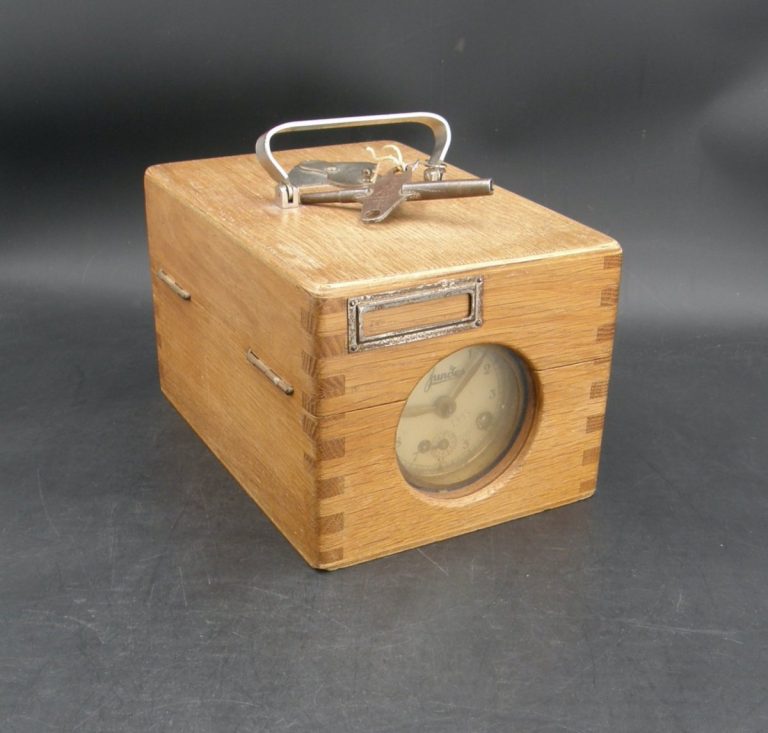0293:: JUNDES pigeon fancier’s racing clock, German oak, ca.1950’s

SKU-0293::
JUNDES pigeon fancier’s racing clock, German oak, ca.1950’s
Racing pigeons is a bigger sport than you might imagine. The world auction record for one pedigreed bird is over $1,000,000. Racing lofts are all over the place, but unless you are aware, you’ll never know where. Most of the activity occurs in metro areas. Belgium is the pigeon racing capitol of the world. Boston is the capitol in the USA, but other eastern metro areas have clubs, too. A buddy introduced me to pigeon racing in 1975 when I was stationed in Germany. I always wanted to take up the sport, yet never did. Now I live in a condo and don’t want to. Lesson learned: do what you want to do when you want to do it!
“So, how’s pigeon racing work?” you ask. Well, in Germany where I lived it worked like this. There are clubs of fanciers whose members keep lofts (pigeon cages). Friday night all participating members bring a few pigeons from their lofts to a gasthause (restaurant). The members eat schnitzel and drink beer while the club officers band one leg of each pigeon of the ones brought to race. The banded pigeons -everyone’s- are loaded into special crates which are loaded onto special trucks. The special trucks hit the road and everyone returns home.
At a very precise moment at a very precise distance on Saturday morning the special operator of the special truck releases all birds simultaneously. Pigeons return to their originating loft (their birthplace – hence ‘homing” pigeons), whereupon the owner immediately captures each bird, removes its temporary band, places the band into a capsule and the capsule into a slot in the top of the clock (like THIS CLOCK) and then he turns the key locking the capsule inside the clock which simultaneously sets the time-print on the roll of paper within. The clock was sealed by the officer of the club the night before.
The loft owner returns to the same gasthaus Saturday evening, turns in his respective clock to the club officials who unseal it and then calculate each fancier’s clock results to determine the fastest pigeons. They can do this accurately because straight-line distances from the various release points and each of the member’s lofts are calculated prior to the race. Before GPS’s these measurements were provided by Pan Am (I don’t remember HOW I know this. I just do). Meanwhile back at the ranch, all of the German pigeon fanciers stuff themselves with more schnitzel and more beer. When dinner is over the winners are announced and money exchanges hands, both betting money and event fee money. Naturally the fastest birds win the most and the birds that win most often are more valuable than the ones that return last, just like in horse racing. Hence mongo-expensive pigeons! …and now you know.
Dimensions: 4¾” 7⅞” 5⅝”. Weighs 7-lbs. Condition consistent with age, VG.
Germany 1950s c.H: 4.75""W: 8""D: 5.75""Reference number: 2024.0293
Click here to print.
go back
